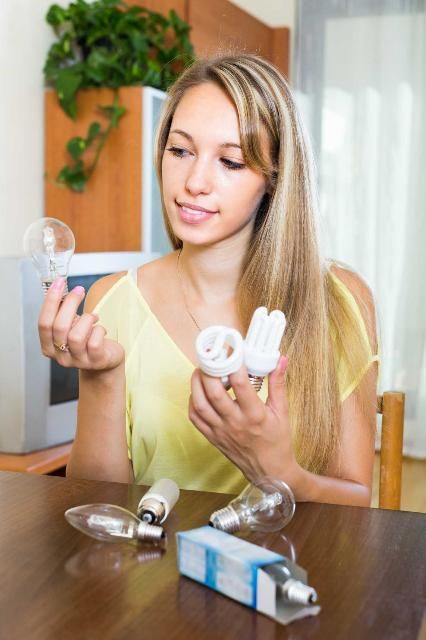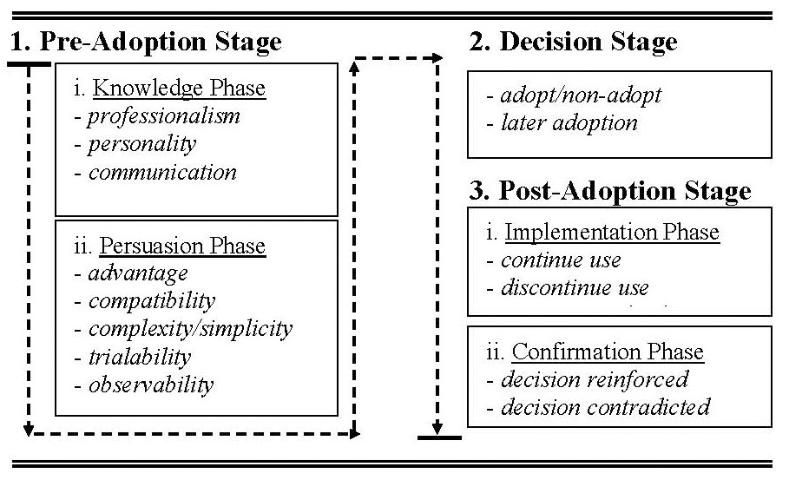Quick Facts
- UF/IFAS Extension works to improve the lives of people throughout and beyond Florida by providing solutions and information, such as ways to conserve water and energy.
- Audiences are more receptive to information customized specifically for them rather than general information (Abrahamse, Steg, Vlek, & Rothengatter, 2007).
- Regardless of their income level, home occupants can be highly bothered by their utility bill (Cantrell & Sewell, 2015).
- Two identical houses located next to each other with the same number of occupants can have substantially different costs for monthly utility bills depending on how those houses are operated (Roth & Brodrick, 2008).
Terms to Help You Get Started
- Segmentation: Differentiating members of an audience into subgroups based on similarities displayed by the subgroups (Andreasen, 2006)
- Decision-Ade™: A discriminant analysis segmentation strategy that groups respondents based on utility-bill "botheredness" (UBB) and household budgetary constraints (HBC) (Cantrell & Sewell, 2015)
- Utility-Bill Botheredness (UBB): A measure of respondents' range of botheredness to utility bills (ex., how customers react to receiving, opening, and reading their utility bill)
- Household Budgetary Constraints (HBC): A comparative measure to that of respondents' self-reported household income (i.e., how the income is managed)
Keywords: behavior change; irrigation; landscape water conservation; segmentation strategy
Introduction
The slightest differences in how home occupants live can result in notable changes on their utility bills (Fabi, Andersen, Corgnati, & Olesen, 2012). Some home occupants are more bothered by their utility bill than others, and thus they are sometimes more motivated to do something about it because of their high level of utility-bill "botheredness" (UBB). Decision-Ade™ is a segmentation strategy that allows audiences to be grouped and analyzed according to how bothered they are by their utility bill (UBB) and how constrained they are by their household budget (HBC) (Cantrell & Sewell, 2015). The benefit of analyzing audiences along both of these dimensions is to identify those who are more bothered—and thus possibly more motivated to change their energy consumption—because they also may have more financial resources to do something about their energy consumption than others who are equally bothered. Further, the level of UBB is not strictly correlated with household income; some households can operate more effectively with less income than those with higher incomes. This is why it is important to understand the composition of the members in your audience. Those who are more bothered by their utility bill may be more receptive to ideas about changing their energy-use behaviors, and it is also important to try and understand what bothers them about their utility bill. Extension programs could increase their impact by applying principles of audience segmentation and using targeted programming to emphasize a marketing orientation that better ensures their resources are being used most efficiently.

Credit: Fuse/Thinkstock.com

Credit: JackF/iStock/Thinkstock.com
How Technology or Ideas Are Adopted
Marketing has a foundation in psychology, which is why it has been successful in developing specific methods intended to increase behavioral change, particularly as it applies to residential energy conservation (White et al., 1984). Everett Rogers (1962, 1983, 1995, 2003) helped to pioneer the discipline of communication and marketing science, especially when modeling how new information is disseminated to a targeted audience. He showed that audiences needed to be influenced about a new idea or technology based on something they could already relate to, and then they needed product and customer support to help them decide whether to try using the new idea or technology. Once they were willing to try using it, audiences needed additional product and customer support to ensure they did not get frustrated or confused. Finally, they needed follow-up support to reinforce that everything was going well with their use of the new idea or technology. Without these steps and processes in place, trial adopters could discontinue use at any point. Figure 3 shows these various stages and phases.

Credit: Rogers, 1983
An Example Highlighting Residential Irrigation Users in Florida
A 2014 web-based survey was conducted in Florida of 1,063 residents who were at least 18 years of age, were current Florida residents, owned or rented a property with a landscaping irrigation system, and had control over their property's irrigation system. Respondents were asked to reply to the following Decision-Ade™ variables/statements based on utility-bill botheredness (UBB) and household budgetary constraints (HBC) from 1 = Highly Disagree to 10 = Highly Agree.
Utility-bill Botheredness:
- When thinking of past utility bills, I am bothered.
- My current utility bill bothers me.
- My utility bill is too expensive.
Household Budgetary Constraints:
- By the end of the month, my bank account is mostly depleted.
- My household budget is tight most months.
- I frequently have problems making ends meet.
After respondents answered the UBB and HBC statements, they were assigned to their respective segment. (Decision-Ade™ does so with 99% accuracy provided none of the six statements are altered.) Respondents answered the UBB statements as summarized in Table 1. After determining where the natural breaks occurred within subgroups of the sample, individuals whose UBB mean score was four or less were assigned to the lowest UBB group, five or six to the middle UBB group, and seven or more to the highest UBB group. The highest UBB level respondents (n = 331, 31.1%) were further analyzed because of their presumed desire to effect change in their utility bill (and thusly are referred to as the "Bothereds") (Table 2).
Average Monthly Water Bill
As seen in Table 3, Bothereds pay anywhere from a little (i.e., $0–$50/month) to a lot (i.e., > $150/month) for their water bill, yet they are all highly bothered by their water bill. Why? For further insight, we need to refer to Tables 4 and 5 to analyze the financial side of these persons' makeup. Bothereds need not necessarily be low-income earners to be assigned to their segment; Bothereds show up in every earned annual household income category.
Summary
Bothereds' reporting of annual family household income does not provide sufficient insight to determine their opinion about their true financial situation. It is merely an arbitrary number without the complementary information offered by HBC. Extension clientele consisting of Bothereds earning less than $75,000 who are also in the highest HBC segment have limited discretion in deciding how their income is distributed because their budget is highly constrained. Conversely, Extension clientele consisting of Bothereds earning more than $75,000 who are also in the two lowest HBC segments might have more discretion in deciding how their income is distributed. These insights could prompt Extension professionals to consider initially focusing irrigation water-conservation programming efforts toward members of the Bothereds segment—who earn less than $75,000 and are also in the highest HBC segment—that heavily emphasize less costly measures rather than more costly measures, such as certain types of water conservation technologies. Those Bothereds earning more than $75,000 in the lowest two HBC segments might be more receptive to programs that involve some of the more costly water-conservation technologies while also learning about water conservation practices.
References
Abrahamse, W., Steg, L., Vlek, C., & Rothengatter, T. (2007). The Effect of Tailored Information, Goal Setting, and Tailored Feedback on Household Energy Use, Energy-Related Behaviors, and Behavioral Antecedents. Journal of Environmental Psychology, 265–276.
Andreasen, A.R. (2006). Social marketing in the 21st century. Thousand Oaks, California: Sage Publications. doi:10.4135/9781483329192
Cantrell, R. & Sewell, C. (2015). Decision-Ade™: An innovative process for segmenting U.S. homeowners by utility-bill "botheredness" and budget constraints. Journal of Architectural Engineering. http://dx.doi.org/10.1061/(ASCE)AE.1943-5568.0000176.
Fabi, V., Andersen, R., Corgnati, S., & Olesen, B. (2012). Occupants' window opening behaviour: A literature review of factors influencing occupant behaviour and models. Building and Environment, 58, 188–198.
Rogers, E. (1962). Diffusion of Innovations. New York, NY: Free Press of Glencoe.
Rogers, E. (1983). Diffusion of Innovations. 3rd Edition. New York, NY: The Free Press: A Division of Macmillan Publishing Co Inc.
Rogers, E. (1995). Diffusion of Innovations 4th Ed. New York: Free Press.
Rogers, E. (2003). Diffusion of Innovations 5th Ed. New York: Free Press.
Roth, K. & Brodrick, J. (2008). Home energy displays. ASHRAE Journal, 50(7), 136–138.
White, L., Archer, D., Aronson, E., Condelli, L., Curbow, B., McLeod, B., Pettigrew, T., & Yates, S. (1984). Energy conservation research of California's utilities: A meta-evaluation. Evaluation Review, 8(2), 167–186.
Urbany, J. E., Dickson, P. R., & Kalapurakai, R. (1996) Price search in the retail grocery market. Journal of Marketing 60, 91–104.
Volkner, F. (2008) The dual role of price: Decomposing consumers' reaction to price. Journal of the Academy of Marketing Science 36(3), 359–377.
Disclaimer
This material was prepared with the support of the University of Florida. However, any opinions, findings, conclusions, or recommendations expressed are those of the author(s) and do not necessarily reflect the views of the University of Florida.
Acknowledgments
The authors would like to acknowledge the UF/IFAS Center for Land Use Efficiency (CLUE ~ https://clue.ifas.ufl.edu/) for supporting this publication. Further the authors would like to especially thank Dr. Elizabeth Felter (UF/IFAS Extension Orange county) and Mr. Brad Sewell (former UF graduate student and co-founder of Decision-Ade™) for their careful review of this material.
Appendix: Encouraging Landscape Water Conservation Behaviors Series Overview
The Encouraging Landscape Water Conservation Behaviors series was developed to address promoting adopting water-saving practices and technologies to a specific target audience, Florida residents who use irrigation in their home landscapes. These EDIS publications provide information to help Florida Extension professionals to understand this target audience and guide more effective programming.
#1: Tailoring Programs to Florida Residents Who Use Irrigation in the Home Landscape (WC199): This publication describes commonalities among this target audience and describes Florida residents who use irrigation in the home landscape. By understanding characteristics of this audience, Extension professionals can develop more effective and targeted programming for this audience.
#2: Applying Audience Segmentation to Water Conservation Activities in the Landscape—Defining Segments of the Florida Homeowner Audience and Implications for Extension Programming (WC200): This publication describes how segmentation can be applied to increase the effectiveness of Extension programming and defines specific segments of this target audience.
#3: Developing Extension and Outreach Messages (WC201): This publication defines message framing, gain and loss framed messages, and value frames. Extension educators are encouraged to incorporate framed messages into their programming.
#4: Florida Homeowners' Reactions to Messages that Encourage Landscape Water Conservation Practice Adoption (WC202): This publication examines attitudes and perceived behavioral control over good irrigation practices among Florida residents who use irrigation in the home landscape. The impact of different messages that Extension educators may use to encourage water conservation is presented.
#5: Segmenting the Audience Based on HOA Status (WC203): This publication segments Florida residents who irrigate by HOA status. Commonalities and differences among those who belong to an HOA and those who do not belong to an HOA are explored. Extension educators can use this information to understand how HOA status impacts water conservation practices.
#6: Information-Seeking Preferences of Florida Residents Who Use Irrigation in the Home Landscape (WC204): This publication examines information-seeking preferences of Florida residents who use irrigation in the home landscape. Extension educators can use this publication to understand how residents seek information and the type of water conservation information that residents would like to learn about.
#7: Personal and Social Norms of Florida Residents Who Use Irrigation in the Home Landscape (WC205): This publication examines personal and social norms of Florida residents who use irrigation in the home landscape and describes how these characteristics can impact water conservation practices. Extension educators are encouraged to tailor programs that will encourage good irrigation practices and water conservation activities based on personal and social beliefs.